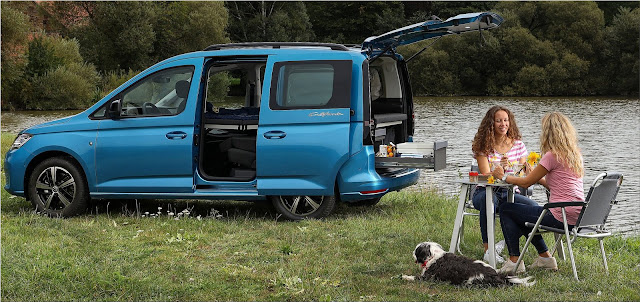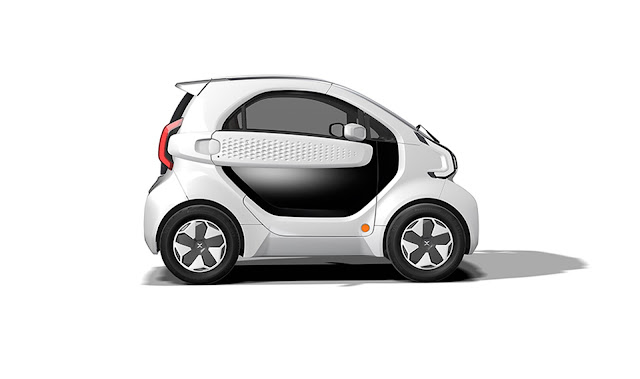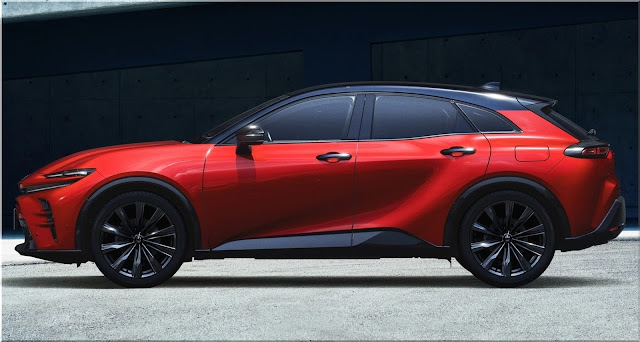The new BMW 3.0 CSL coupe, sport, and lightweight car
The new BMW 3.0 CSL blends distinctive styling with a two-seat performance. It brings up the 1970s concept of using racetrack technology for road driving enjoyment.
The BMW 3.0 CSL sports car was designed to combine BMW M GmbH's racing experience with a vibrant ambiance. Dynamic outward beauty, a classic sportscar cockpit, innovative lightweight construction, a straight six-cylinder engine, a manual transmission, and rear-wheel drive are all BMW M hallmarks. They complement each other with the newest technologies to produce the brand's ultimate sign of intrigue for high performance. A trip in a BMW 3.0 CSL is a unique high-performance experience and an emotional meeting with the world's most powerful car.
The BMW 3.0 CSL sports car is limited. The anniversary model will be sold in 50 sequentially numbered pieces. The BMW 3.0 CSL is a rare model that will be in the collections of ardent BMW M aficionados.
Vehicle manufacturing will take three months. Each one is made in the BMW Group Dingolfing facility in Moosthenning, Lower Bavaria, with the utmost attention to quality and perfectly synchronized technology. Exclusive interior CFRP components are hand-made in Munich and at Landshut's BMW Group component manufacturing facility.
Craftsmanship and modern technology combine to give each BMW 3.0 CSL component its distinctive color. Thirty skilled experts configure and assemble the automobiles. Each BMW 3.0 CSL goes through eight assembly cycles at as many production sites, a 10-day operation.
Due to the large share of physical labor, it takes longer to manufacture a BMW 3.0 CSL than a BMW M. Each vehicle passes a multi-stage quality examination and approval procedure at the main Dingolfing plant before delivery to the client. BMW's largest European plant is in Dingolfing. BMW M cars, BMW 7 Series premium sedans, and Rolls-Royce body components are made there.
As a resurrection of a classic racetrack-and-road sports car, the BMW 3.0 CSL is pure. It blends traditional driving and BMW M GmbH's traditions in a distinctive way. Its namesake model is regarded as the first car with the DNA for maximum driving enjoyment and excitement, which is still a feature of BMW M vehicles today. In BMW Motorsport GmbH's foundation year, it was created for touring car competitions, where it was the most successful car of its day.
The BMW 3.0 CSL won the European Touring Car Championship in 1973 and again from 1975 through 1979. Toine Hezemans, Hans-Joachim Stuck, Chris Amon, and Niki Lauda dominated at the Nürburgring and other circuits until BMW's first US triumphs in 1975. These victories enabled racing vehicles to achieve international fame.
The road version of the racing vehicle, created for homologation, became a symbol of inspired driving enjoyment centered on the fundamentals. CSL stood for "coupé, sport, and lightweight," the two-door car's winning formula.
Its coupe-shaped body has broad wheel arches and an eye-catching aerodynamic package with a front spoiler, air bars on the front side panels, and a roof spoiler. A rear wing improved rear-wheel grip compared to comparable BMW large-series coupes. It wasn't road-ready and sat in the trunk when the coupe was delivered, but it garnered so much attention that it earned the moniker "Batmobile."
The most powerful straight six-cylinder engine with direct injection ever used in a BMW provided dynamic power. A powerful drivetrain and suspension were tuned. It weighed 1,270 kilos, unloaded.
The lightweight construction reduced weight. After opening, the bonnet and boot lid were held by filigree retaining rods. Thin metal was used for the roof, side panels, and baggage compartment divider, and chrome bumpers were replaced with plastic skirting. Lightweight bucket seats, insulation, power steering, and electric windows reduced weight. Overall power-to-weight was 6.2 kg/hp.
The BMW 3.0 CSL has undergone a comprehensive series development procedure while being a standalone product from BMW M. The BMW 3.0 CSL has undergone intensive quality and function tests, driving dynamics tuning test drives and aerodynamic testing. Two hundred hours were spent optimizing the vehicle's airflow and aerodynamic balance, including 50 hours in the BMW Group's wind tunnel. Two pre-production BMW 3.0 CSLs had to pass a frontal and side crash test for road legality.
The BMW 3.0 CSL's classic coupe proportions and conventional vehicle concept combine a front engine, manual transmission, and rear-wheel drive. It looks like a 1970s coupe because it has air deflectors, wheel arches, a rear spoiler, and other things.
The outward characteristics are based on technological requirements for cooling air supply, aerodynamic balance, and driving dynamics, which constitute the basis for thrilling performance. So, the BMW 3.0 CSL conveys racing passion emotionally and authentically.
The low-slung BMW 3.0 CSL front end signals power and agility. At its heart is the characteristic BMW kidney grille with a lattice-shaped insert in a diamond structure. Its upright stance resembles its ancestor's front. Like the side window surrounds, the kidney frame is coated in slick aluminum, a design detail that highlights the special status of the BMW 3.0 CSL. Together with the BMW kidney grille, two generously dimensioned recesses in the front apron, evocative of the air intakes on the 1970s model, guarantee dependable cooling of the drive and braking systems even in very dynamic driving circumstances. Sculpturally designed air fins on the bonnet highlight the classic lines.
Flat headlights increase road concentration. The BMW Laser Light headlights illuminate in yellow during the welcome scenario after unlocking the doors and when the low and high beams are enabled, thereby drawing reference to successful GT racing vehicles. This detail is a subtle reference to the strong connection with motorsport and BMW M GmbH's currently most successful competition vehicle, the BMW M4 GT3, which won both the drivers' and team championships in the DTM in 2022 and whose power unit is based on the same straight-six engine as the power unit of the BMW 3.0 CSL. The BMW M4 GT3 won its first championship in its first season, just as the BMW 3.0 CSL did.
The long bonnet and broad wheelbase give the BMW 3.0 CSL a dynamic, attractive profile. The coupe's three-box shape and brand-typical proportions also help. Particularly broad, diagonally offset side panels, and wide side walls accentuate the energetic impression of the coupe even when stationary, with an air deflector running along the roof line.
Large track widths and muscular wheel arches contribute to excellent cornering dynamics. They allow room for the forged light-alloy wheels in a Y-spoke form, these being 20 inches on the front axle and 21 inches at the back. With their filigree spokes, a gold-colored paint finishes in the manner of the 1970s, and a central lock, they offer a highlight in terms of design and driving characteristics taken directly from racing. The integration of the model-specific wheels into the pre-assembled axles of the BMW 3.0 CSL is part of the production process at the BMW Group's Dingolfing factory. The center lock assembly torque is 930 Nm, the greatest for a BMW Group production car.
Michelin designed special tires for the forged light-alloy wheels on the BMW 3.0 CSL. They have "50" embossed on the sidewalls, a subtle allusion to the anniversary of BMW M, for which the special edition was manufactured.
The four tailpipes of the exhaust system, which are positioned in an arrow configuration in the center of the rear apron and include a particularly lightweight titanium rear silencer, also give a dramatic accent. The rear lights of the BMW 3.0 CSL utilize new lighting technology to provide a distinctive, exclusive night design and a particularly brilliant brightness. Filigree laser light threads appear to float inside the lights to produce an expressive 3D impression.
Right from the beginning of the 1970s, BMW Motorsport GmbH became engraved in fans' memories not only owing to stunning racing achievements but also a recognizable appearance. The drivers' costumes, vehicle carriers, and all other team equipment, like the racing vehicles, had uniform stripes in blue, purple, and red on a white backdrop—a novelty at the time and a globally recognized trademark to this day. The BMW 3.0 CSL carries on this heritage with a paint finish in Alpine White Uni and an intricately applied stripe décor in the BMW M GmbH colors. The lines on the body efficiently mirror the dynamic surfaces, emphasizing the coupe's strong aesthetics even more clearly.
The base color and the M stripes, known in technical language as livery, are applied primarily by hand, demanding an unusually high amount of time and effort. Twenty-two pieces are painted using a BMW 3.0 CSL-specific procedure. Particular attention is paid to a highly accurate arrangement of the parts of the body surfaces and livery stripes completed in visible carbon. Most of the Alpine White Uni exterior is hand-painted carbon. High-tech material only appears in the roof and rear wing lettering. For this purpose, certain parts must be exposed throughout the painting process. Painters employ laser projection and bespoke contour films to position BMW M GmbH livery stripes accurately.
Each component with a livery paint finish has a throughput time of six working days. It completes up to eight painting processes during this period, each with the necessary intermediate work stages, such as sanding and masking the color stripes. This translates into a total of 134 paint operations for each vehicle, adding up to a total of 6,700 manual labor sequences in the paint shop for the entire limited run of the unique model.
The number sequences on the doors and top of the BMW 3.0 CSL sports car, built in the style of early racing cars, provide a bridge from the past to the present. Their design in racing numbers is based on the historical model of the original BMW M automobile created for touring car racing. In contrast, the number 50 refers to the anniversary of BMW M GmbH. Two BMW emblems behind the Hofmeister kink on the C-pillar are another 1970s reminder.
The BMW 3.0 CSL sports car has the most powerful straight six-cylinder engine ever employed in a road-legal BMW M vehicle. This is also a tradition: in its last stage of development, the predecessor of the same name established a new record with an engine output of 151 kW (206 hp), not only for six-cylinder models but for all BMW production cars manufactured up to that moment.
Since then, the straight six-cylinder engine with M Power has evolved incredibly. Engines of the same type mobilized an output of 204 kW (277 horsepower) in the BMW M1 as early as 1978 and 250 kW (340 hp) in the second-generation BMW M5 from 1991. The fifth-generation BMW M3 debuted in 2014 with a 317 kW (431 horsepower) straight-six engine.
The straight six-cylinder engine of the BMW 3.0 CSL shares the same technological foundations as the power unit of the current DTM-winning car. The 3.0-liter power unit has a sleeveless closed-deck crankcase, a forged lightweight crankshaft, and a 3D-printed cylinder head core. The cooling system and oil supply are also built for dynamic driving scenarios. For its championship triumph in the DTM, the BMW M4 GT3 was powered by a variant of the newest straight six-cylinder engine with roughly 600 hp.
The BMW 3.0 CSL's M TwinPower Turbo drive system produces 412 kW/560 horsepower. The new record for straight six-cylinder vehicles from BMW M GmbH with road approval underscores the vehicle's special status. Its engine produces 550 NM.
BMW 3.0 CSL engineers employed a decades-old idea to direct motor power to the road for optimal driving pleasure and driver-vehicle connection. Straight six-cylinder engine mated to a 6-speed manual gearbox with performance-optimized spread and ratios. Precisely regulated gear shift travel facilitates rapid and precise gear changes. The shifting knob, developed particularly for the BMW 3.0 CSL, protrudes from the central console and is an elegant ornament. Its white surface, etched gearshift diagram, and number 50 recall the 1970s beginnings of BMW M GmbH. The shift assistance utilizes a connection speed control to prevent clutch slippage when downshifting for curves. It's driver-activated.
BMW's 3.0 CSL drives entirely through the rear wheels. For aggressive usage on the racing track, the driver may employ the usual M-linear build-up of lateral acceleration forces to guide the car around turns with controlled drift movements. The active M differential in the rear-axle gearbox also provides exceptional performance. If necessary, it inhibits rear-wheel torque correction and continuously and variably builds up a 100% locking effect. The DSC-linked active M differential adapts its locking effect to the driving circumstances. For example, traction is optimized on roads with differing friction levels for the right and left rear wheels. When accelerating dynamically out of curves, the driver receives clear feedback on the grip potential of the rear wheels and can thus correctly dose the accelerator pedal.
In suspension technology, cutting-edge technology is combined with a five-decade-old approach to balancing all components. The suspension components used in the BMW 3.0 CSL represent the spearhead of development for high-performance sports cars by BMW M GmbH: a double-joint spring strut front axle and a five-link rear axle in M-specific design, an Adaptive M suspension with electronically controlled shock absorbers, the electromechanical M Servotronic steering with variable ratio, and the M carbon ceramic brake system with adjustable characteristic curves.
The combined application of all drive and chassis systems took place during intense test drives on public roads and on racing tracks, including the Nürburgring Nordschleife, which has been the ultimate proving ground for all BMW M vehicles for 50 years. Before testing, experts at BMW M GmbH had created and optimized the digital picture of the BMW 3.0 CSL in every aspect of the computer-aided design and development process. By merging virtual reality and other digital technologies, it was feasible to expedite the series creation process to the utmost extent. This detailed simulation and tuning process took into account the model-specific dimensions, vehicle weight, and axle load distribution, the highest high rigidity of the body and suspension connections, as well as the aerodynamic balance of the BMW 3.0 CSL, to ensure from the onset that typical M combination of agility, dynamics, and handling precision.
With powerful deceleration performance, enhanced fading stability, remarkable thermal stability, and the M carbon ceramic brake system delivers exceptionally high wear resistance. It has six-piston fixed-caliper brakes and 400x38-millimeter ceramic brake discs on the front axle and single-piston fixed-caliper brakes, and 380x28-millimeter ceramic brake discs on the rear. The brake calipers are red. The M-specific design of the integrated brake system displays two pedal-feel curves in the M setup.
The driver can set M Traction Control's wheel slip intervention thresholds. Ten settings are offered, while the M dynamic mode deactivates the ESC completely. The BMW 3.0 CSL is ready for pure racetrack performance.
In the BMW 3.0 CSL, clever lightweight construction is reformed and molded, utilizing modern technologies. Carbon fiber-reinforced plastic (CFRP) and minimum insulation are employed to minimize weight in the body and chassis. BMW M GmbH is a pioneer in the application of CFRP in series-produced automobiles. As early as 2004, it equipped a large-series vehicle with a carbon roof for the first time.
The BMW 3.0 CSL's exterior is almost all CFRP. In addition to the top, bonnet, and boot lid, the front, and rear aprons are built entirely of carbon. Front and rear side panel attachments, side sills, the rear diffuser, the rear wing, and the rear spoiler are likewise high-tech. All carbon components are fabricated in small numbers, mainly by hand, and exclusively for the BMW 3.0 CSL sports car.
In addition, a focused selection of materials and state-of-the-art design approaches also contribute to a considerable decrease in the weight of other vehicle components. The roof spoiler of the BMW 3.0 CSL sports car is constructed of glass fiber-reinforced plastic. The BMW 3.0 CSL's titanium rear silencer is 4.3 kg lighter than steel. The cast-aluminum precision struts in the engine compartment, which connect the suspension strut domes and the front end, have a geometry that has been precisely suited to the forces applied in different driving scenarios. Numerical models optimize agility and steering precision with little material and weight.










Comments
Post a Comment